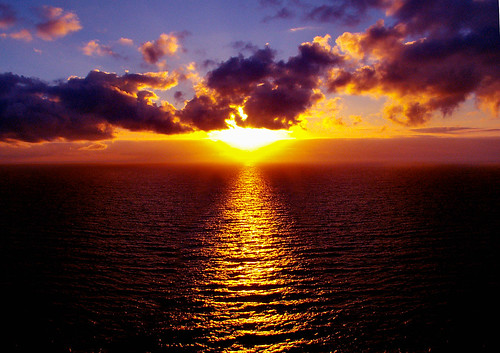Tuesday, March 31, 2009
Wednesday, March 4, 2009
Citing Digital Images

Photo Attribution:
Original Image: Bedruthan sunset
http://farm1.static.flickr.com/128/353250218_404318ff36.jpg
By: Ennor
Released under an Attribution-Non-Commercial-Share Alike License
http://creativecommons.org/licenses/by-nc-sa/2.0/deed.en
Before this week's assignment the first thing I would have suggested to my student would be to do a google image search. This is the way I have searched for images ever since I started and I didn't know any other way. The problem with google image searches is that sometimes there are images displayed that are completely unrelated to what you are searching for and some can be very inappropriate. If the student needed images that could be clip art, I would suggest that they search for clip art under the subject that they want on Microsoft Word. If the student asked me how to cite the picture I would have told them just to cite the website that they got it from using MLA or APA style. I never knew there was a formal way to cite a picture so I wouldn't have been able to send that knowledge on to my student.
Now... I would have my students use the creative commons site. At the site there are still links to google images, as well as other browsers images so it can expand the amount of results that the student could get. I would also suggest this site because it is easy to navigate and I would know that the pictures were legitimate. Creative Commons also makes it easier for students to be able to site the pictures they use so that they don't run into problems with copyright. Although I have never had problems with copyright laws it makes me nervous now that I have used hundreds of images from the internet without giving the author credit. With the growing involvement of the digital world in the classroom, I think it is crucial for students to know how to credit all of the sources they use. I would show my students how to correctly cite an image using the example posted above.
Sunday, March 1, 2009
Rock Cycle Photo Story
I chose to create a digital story that I would use as a teacher to present to my students. I have been interested in this form of lesson since I was asked to create a digital story in my TE 401 class last semester. I ended up using a digital story about Michigan Statehood in a lesson I taught to a fourth grade class. It is really beneficial to be able to incorporate visual and oral stimuli into a lesson and this is what the digital story offers. The first time I created a digital story I used a different program. This was my first time using VoiceThread. At first it was confusing, however as I became more familiar with the website it was pretty straight forward to use. I think the VoiceThread tool is great for first time photostory creators and I like that you can also incorporate video into the story, even though I didn't chose to try it.
There are many different things that teachers can use photostory programs for in their classrooms. Not only does it create a orally and visually stimulating lesson tool, but it is also something that can be used by students. In many classrooms that I have been in, teachers incorporate jigsaws, in which groups of students are responsible for teaching a topic to the rest of the class. A photo story could be used by students to teach their topic while including their voices into the presentation. Sometimes students have trouble speaking in front of the class and this could be a good way for them to transition. By recording ahead of time, some of the anxiety is lessened. I can see photostories taking the place of powerpoints in some situations because of the extras that can be added, such as voice and video. Teachers can also use photostories to highlight student work to place on a blog for parents and administrators. The opportunities are limitless, teachers just need to do some exploring.
Subscribe to:
Posts (Atom)

